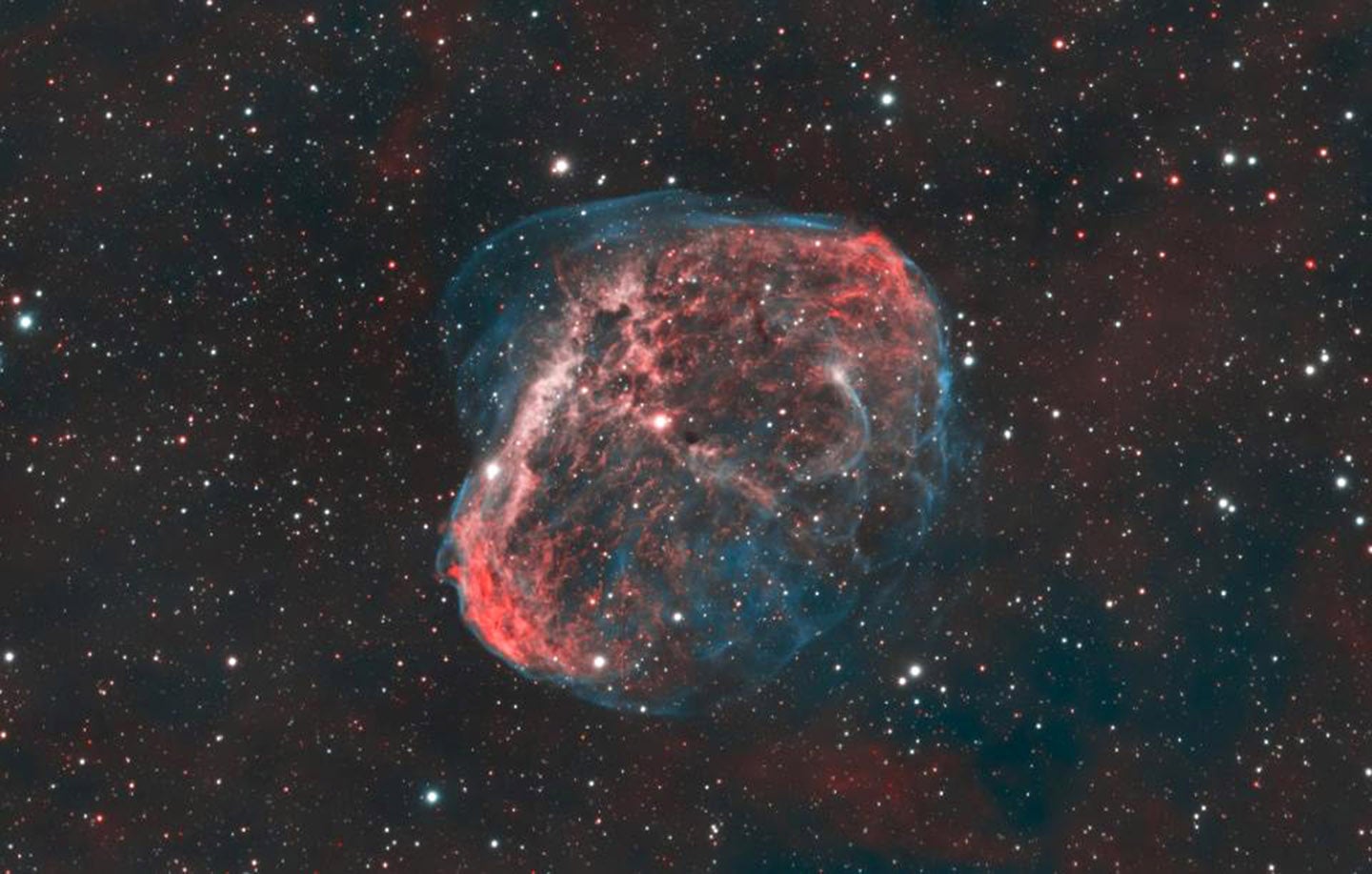
One of the most striking summertime objects is the oddly shaped Crescent Nebula (NGC 6888) in Cygnus. William Herschel was first to spot it, back in September 1792. He described the sight as “a double star of the 8th magnitude with a faint … milky ray joining to it.”
Telescopes equipped with contrast-enhancing filters showed that Herschel’s “milky ray” curves around both sides of that star. That unique appearance — reminiscent of our Moon a few days before or after the New phase — led to its nickname, the Crescent Nebula.
However, more sensitive digital images show the complete picture. Rather than a crescent, they record a distinctly oval form. In fact, the details in today’s images are so extensive, they make it difficult to identify the simpler crescent shape.
At first glance, some might conclude that we are looking at a planetary nebula or possibly a supernova remnant. In reality, the Crescent Nebula is an unusual class of emission nebulae that are byproducts of Wolf-Rayet stars — the hottest known stars, named after astronomers Charles Wolf and Georges Rayet, who discovered the first three.
The Wolf-Rayet star at the center of the Crescent Nebula, designated WR 136 (also known as HD 192163), has a surface temperature of nearly 100,000 degrees Fahrenheit (54,800 degrees Celsius). That’s nearly 10 times hotter than our Sun.
The nebula we see formed when the star’s fast-moving stellar wind collided with a stream of slower-moving particles ejected from WR 136 several hundred thousand years ago. The collision produced a glowing nebulous shell and two shock waves traveling in opposite directions.









